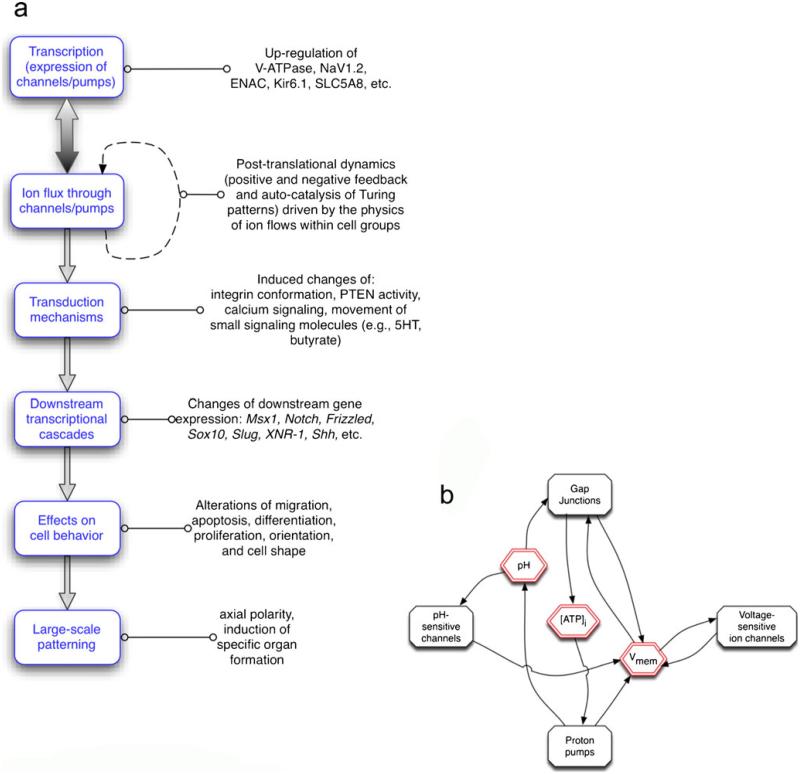Fig. 1.
Overview of bioelectric signaling in cell regulation. a Transcriptional events (up- or down-regulation of specific ion channel/pump genes) establish the complement of ion translocators expressed in any cell. Their activity results in changes of ion content and transmembrane potential, which is transduced by a number of mechanisms that couple biophysical events to changes of the expression of target genes. These in turn also control key cell behaviors and large-scale anatomical properties such as axial patterning and organ specification/morphogenesis. b Interplay between physiological properties (red) and specific proteins (black). An important aspect of physiological signaling is the multiple feedback loops that occur because of the physiological (post-translational) gating of channels and pumps. For example, the level of gap-junctional connectivity determines the way that voltage spreads between adjacent cells but gap junctions are themselves regulated by voltage gradient. Thus, cells and cell groups can implement self-organizing spatially distributed stable patterns (e.g., auto-catalytic Turing-Child dynamics) even in the absence of differential transcription or genetic prepattern. Cell fields can thus be described as complex dynamical systems with multiple stable attractors, supporting symmetry breaking, hysteresis (memory) and the amplification of stochastic heterogeneity (Vmem resting voltage potential)

